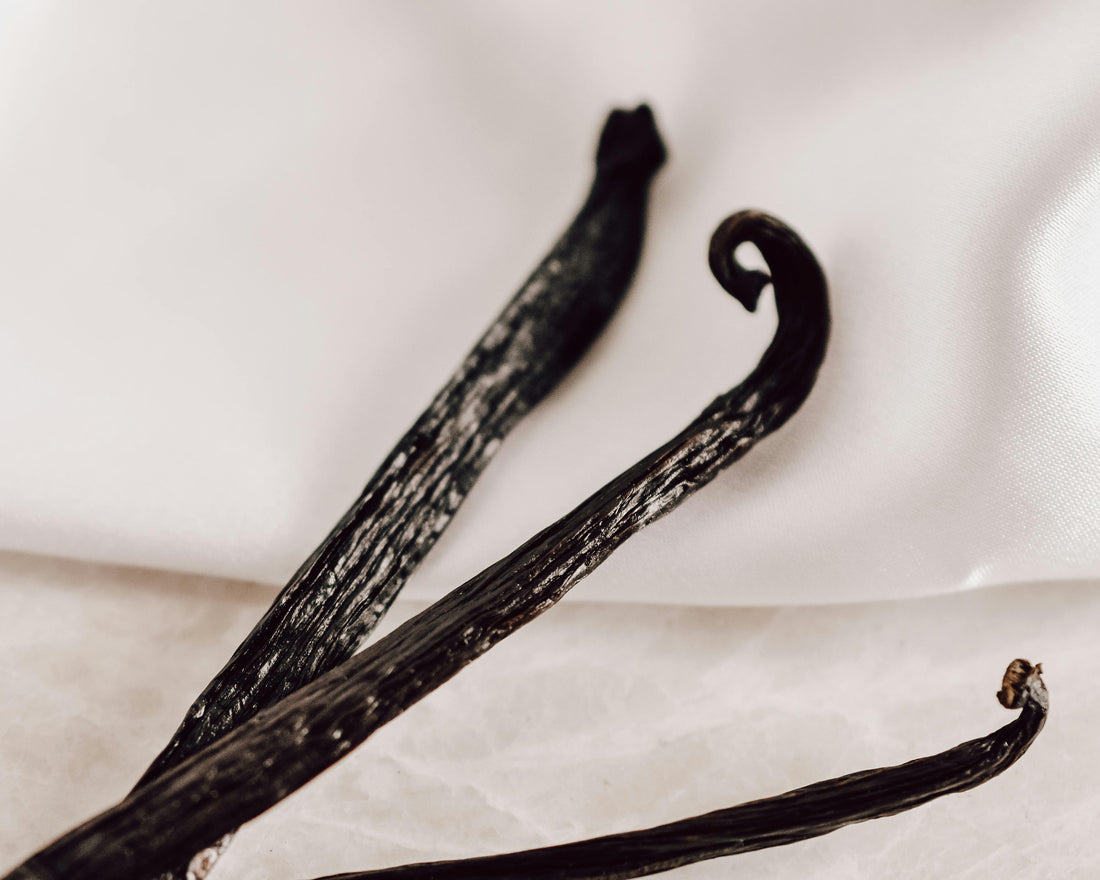Unwrapping the Secrets of Vanilla: Facts, Description, & Cultivation
What comes to mind when you think of vanilla? That tantalizing, sweet aroma and flavor that enhances so many foods? Did you know that vanilla has a rich history too?
Vanilla is the second most expensive spice in the world—only saffron ranks higher. Its complex cultivation process and labor-intensive production means quality vanilla costs a premium price. But it’s worth it! Real vanilla infuses notes of decadent caramel, raisin-like sweetness, and floral undertones to make desserts shine.
We’re spilling the beans on everything you need to know about vanilla from A to Z—including fascinating facts, description, cultivation process, and uses for vanilla beans and extract. Consider this your crash course in all things vanilla!
Where Does Vanilla Come From?
The vanilla orchid is the source of vanilla flavoring. There are over 110 subspecies of the vanilla orchid, but three main varieties are cultivated for commercial production:
- Vanilla planifolia - the most popular, from Central America and Mexico
- Vanilla pompona - from Central America, more fruity tasting
- Vanilla tahitiensis - less common, from the Pacific Islands
The orchid produces vanilla beans which are hand-pollinated and cured through months-long processes. It’s very labor-intensive!
Breeding and Cultivation
Here’s an overview of how farmers cultivate delicate vanilla orchids:
- Cuttings or grafting propagate new orchid vines
- Vines grow on supports for 3-4 years before flowering
- Flower buds’ hand pollinated to produce beans
- Beans cured through drying, conditioning, and sweating
- Aged dried beans sorted for market
Vanilla grows in humid tropical areas near the equator. Major production areas include Madagascar and nearby islands, Indonesia, China, Mexico, Uganda, Tahiti, Comoros, and Costa Rica.
How Do You Describe Vanilla Beans?
Ripe, black vanilla beans measure roughly 8-10 inches long. They are wrinkly like a raisin, plump, supple, shiny, and bendable when of best quality. Inside you’ll see thousands of tiny black vanilla seeds.
Can You Substitute Vanilla Extract for Beans?
Vanilla beans offer complex aroma and flavor that extracts can’t completely replicate. But for most applications, extract substitutes well for whole beans.
Use 1 teaspoon of pure vanilla extract in place of the seeds scraped from one bean. Add it any time flavor is needed whether baking desserts or infusing cream, custard, oatmeal, etc.
What’s the Difference Between Vanilla Extract vs. Essence vs. Paste?
Vanilla comes in a few forms that work slightly differently:
Extract: Vanilla beans steeped in alcohol solution for robust flavor (most common)
Essence: Water solution with vanilla extract, subtle flavor
Paste: Vanilla beans cooked into a spreadable paste, very intense
How Do You Store Vanilla Beans?
To retain moisture, aroma, and flavor, briefly blanch whole beans in boiling water, pat dry, and store airtight with wax paper in a cool, dark place up to one year. Slice open beans when ready to scrape out seeds and flavor custards, cakes, etc.
What are some of the Unique Ways to Use Vanilla?
Of course, vanilla shines in desserts, but try these more unusual uses too:
- Homemade vanilla sweet creamer for morning coffee
- Infuse vanilla roasted almonds for a tasty snack
- Blend into smoothie bowls and milkshakes
- Make vanilla honey by steeping beans in honey jars
- Craft vanilla bean speckled bath bombs or soaps
Did You Know? Fun Facts About Vanilla
Beyond being yummy, vanilla has some cool quirks. For example:
Vanilla gets its name from the Latin “vagina” meaning sheath—a reference to the long pods that house seeds.
Vanilla orchids only bloom one morning a year! That makes pollination tricky.
Mexico produces less than 1% of the world's vanilla today but introduced it to global markets originally.
In Ancient Aztec and Mayan civilizations vanilla was believed to enhance energy and vigor.
We covered everything from cultivation, uses, storage tips to origin stories and random trivia—the A to Z of irresistible vanilla! What else would you add about vanilla?




